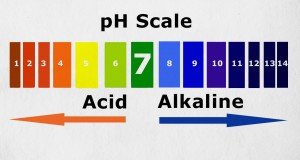Cut your risk of a heart attack by 50 percent, researchers discover simple solution
(NaturalHealth365) For many people, having a sedentary lifestyle can be a dangerous thing. In fact, did you know, the World Health Organization (WHO) lists “lack of exercise” as the fourth leading cause of death worldwide (right up there with smoking and high blood pressure!) On the contrary, recent research supports the ability of regular physical activity to lower your odds of having a heart attack.
According to a new Norwegian study, cardiorespiratory fitness – which refers to the ability of the heart, lungs and vascular system to deliver oxygen efficiently to muscles – not only reduces the risk of heart disease and premature death, but can slash the risk of heart attack nearly in half.
Heart attack risk: Large population-based study offers fair warning for all of us
According to a new study involving 4,500 participants and published in the European Heart Journal, lack of physical activity can dramatically increase the risk of heart attack years later – even in the absence of symptoms.
To conduct the study, the researchers used V02 peak – the maximum quantity of oxygen the body can take in during exercise – to measure fitness levels. VO2 peak is considered one of the most precise methods for evaluating cardiorespiratory fitness.
Increasing VO2 peak (thereby increasing an individual’s physical fitness) was found to have substantial benefits in reducing the burden of coronary heart disease. Conversely, researchers found that less fit participants, with lower oxygen uptake, experienced an increased risk of heart disease and premature death.
Unlike previous studies that examined primarily men, over half of the participants in the study were women. All were relatively healthy at the beginning of the study, with none diagnosed as having cardiovascular disease, lung disease, cancer or high blood pressure.
More than 80 percent of the volunteers were considered to be at “low risk” for developing heart disease over the next decade.
Increasing degrees of fitness lead to increased cardiovascular health
By the end of the ten-year study, 147 of the participants had had heart attacks or had developed angina pectoris – chest pain or discomfort due to heart disease.
The researchers were able to identify a clear relationship between cardiorespiratory fitness and disease risk – and even developed a formula for linking the two.
The team concluded that each increase in fitness of 3.5 points was associated with a 15 percent lower risk of heart attack or angina.
Study co-author Bjarne Nes, of the Cardiac Exercise Research Group at the Norwegian University of Science and Technology in Trondheim, noted that the top 25 percent of the fittest participants had only half as high a risk (48 percent) as those who fell into the lowest 25 percent.
You can be sure: if a reduction this drastic were achieved by a pharmaceutical medication, drug manufacturers would make sure everybody heard about it!
The team stated that they hoped that the result would encourage people to use physical training as a preventive medicine, and noted the importance of doctors taking fitness measurements into consideration when estimating disease risk.
Additional research confirms: Low activity levels linked to diabetes
Other studies have shown that even short periods of physical inactivity can cause an increased risk of disease. In research recently published in Journals of Gerontology, researchers found that limiting the mobility of older, overweight, prediabetic adults caused full-fledged diabetes symptoms to emerge.
Volunteers were told to restrict their daily steps to less than 1,000 a day – the equivalent of being hospitalized, or on bedrest – for two weeks.
And the results – suddenly elevated blood sugar, worsening insulin sensitivity – were dramatic. Essentially, the participants “became diabetic.”
Furthermore, these unhealthy effects did not subside when normal activity was resumed – an ominous finding, and one which researchers admitted caught them by surprise.
Yet another study showed that healthy adults pay a price for periods of inactivity as well.
When healthy young men were asked to cut their daily steps in half – from over 10,000 steps per day to under 5,000 – they also experienced a significant and rapid negative effect on blood sugar control.
Note: Diabetes currently affects over 30 million Americans, while another 84 million are prediabetic – with elevated blood sugar that will likely to progress to diabetes if untreated.
Major payoff: Exercise greatly improves physical and emotional wellbeing, plus one other IMPORTANT aspect of health
Exercise protects against heart disease by improving risk factors such as high blood pressure, inflammation and excess fats in the blood. In addition, physical activity increases circulation, strengthens bones and helps combat the obesity that can contribute to diabetes, heart disease and metabolic syndrome.
Along with the physical benefits, a workout program can offer mood-lifting and cognitive effects – which can be felt almost instantaneously.
Researchers report that a single 30-minute exercise session can offer immediate brain health benefits – including improved cognition, better executive function, sharper memory and elevated mood. (What’s not to like about that?)
There is even evidence that regular physical exercise can lower cancer risk.
The American Cancer Society reports that a recent review of data involving 1.4 million patients indicates that aerobic exercise can lower the risk of at over a dozen different types of cancer. Regular physical activity was associated with up to a 20 percent lower risk of developing cancers of the lung, kidney, stomach, liver, esophagus, colon and endometrial lining – as well as decreased risk of leukemia and multiple myeloma.
The National Institutes of Health recommends that adults undertake a minimum total of 2 hours and 30 minutes a week of moderate-intensity aerobic exercise, which can include cycling, dancing, swimming, running, tennis and even brisk walking.
Of course, if you have been inactive for some time, or have a medical condition, consult your doctor before beginning a new workout program.
In addition to delivering major health benefits in the here and now, regular physical activity can help protect you against potentially life-threatening diseases many years down the road.
There is no better time than the present to start moving (your body and mind will thank you!)
Sources for this article include:











